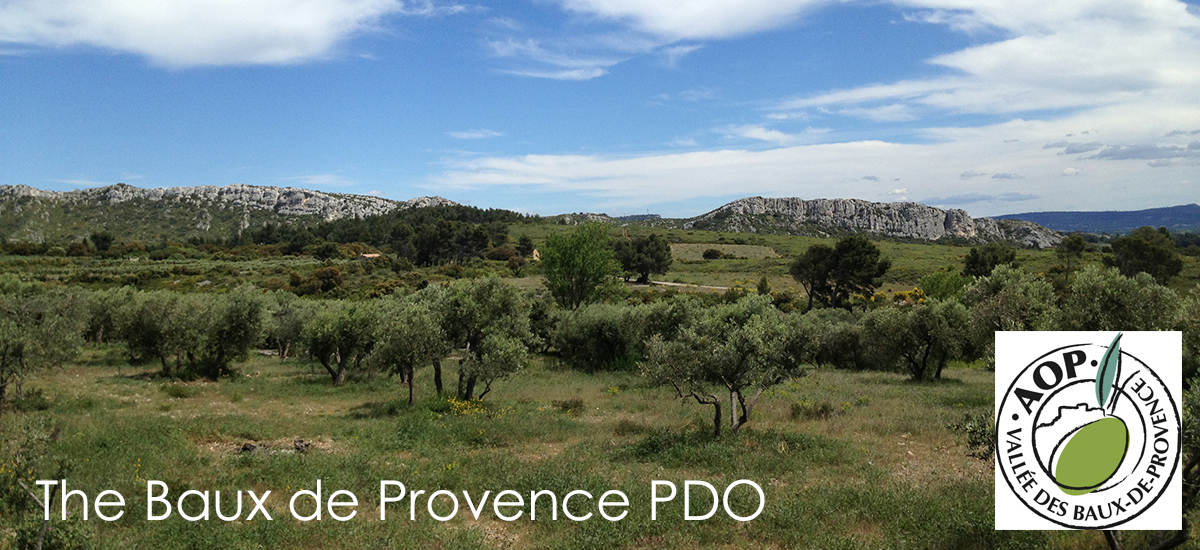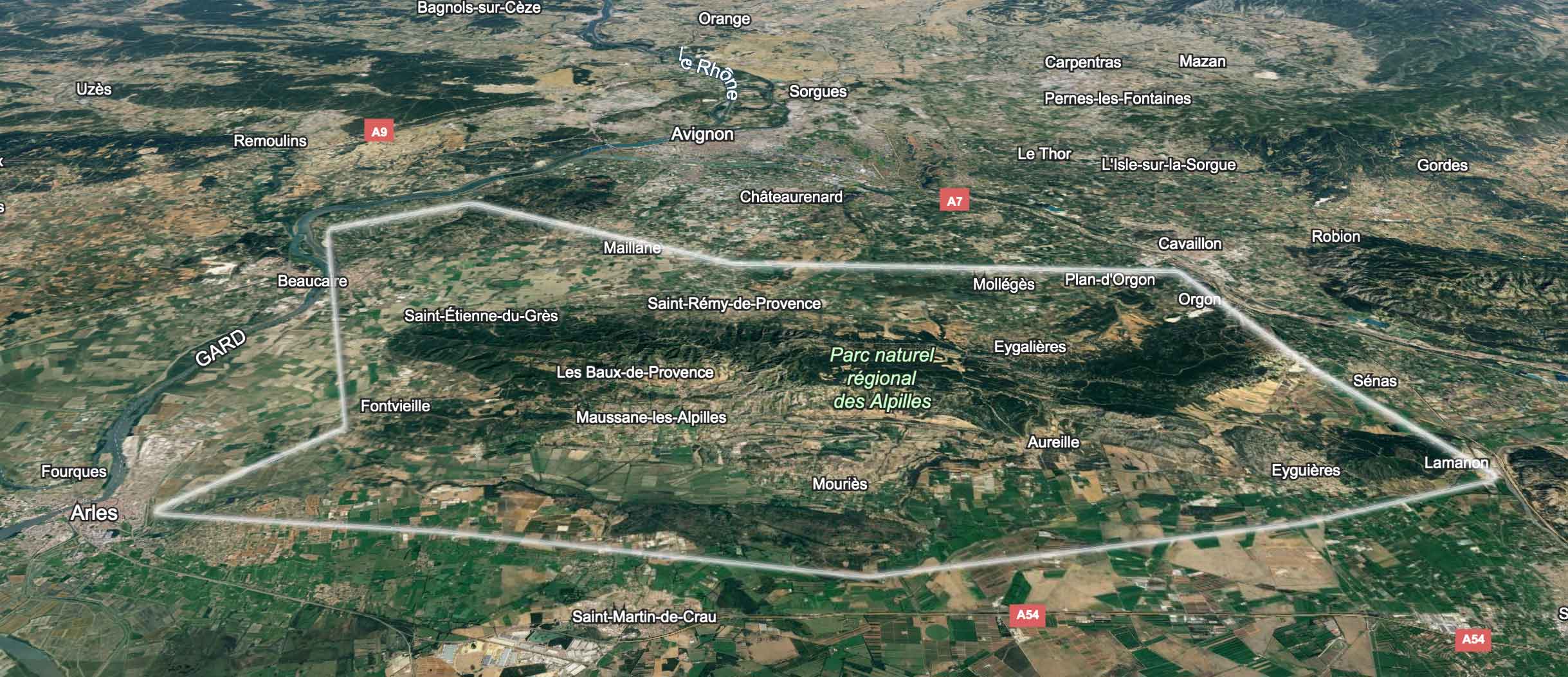The Protected Designation of Origin Les Baux-de-Provence (Les Baux-de-Provence PDO olive oil) is limited by the Alpilles massif that goes from Lamanon in the south-east to Arles in the south-west, from Orgon in the north-east to Saint-Etienne-du-Grès in the north-west.
The term – Protected Designation of Origin, granted by the National Institue of Designation of Origin as well as the European Commission, serves as a guarantee, for the irreproachable quality of the product as well as the authenticity of its place of origin. It is a rigorous label that is acquired after tests, with controls throughout the production chain and many taste tests to support it.
The entire process, from harvesting olives to their transformation into olive oil, take place in the geographical area specific to olive oil, located on the territory of 17 villages in the Bouches du Rhône, revealing land that is dotted with olive groves: Arles, Aureille, les Baux-de-Provence, Eygalières, Eyguières, Fontvieille, Lamanon, Mas-Blanc-des-Alpilles, MasBlanc-des-Alpilles, Maussane-les-Alpilles, Mouriès, Le Paradou, Saint-Martin-de-Crau, Orgon, Saint-Étienne-du-Grès, Saint-Rémy-de-Provence and Sénas, Tarascon.
The specificities of the Baux-de-Provence PDO olive oil
The “Olive Oil of the Baux-de-Provence Valley” is distinguished by aromas (at least 2) such as freshly cut grass, apple, almond, raw artichoke, fresh hazelnut or tomato leaf, with moderate bitterness and pungency. Its bitterness does not exceed 3 and its piquancy, called “ardence”, varies between 1 and 3 on the scale of the International Olive Council (IOC), with a maximum oleic acid content of 0.8 grams per 100 grams.
The oil named “ripe olives” is sweet and smooth, with aromas (at least 2) such as candied olives, black olives, olive paste, cocoa, mushroom, cooked artichoke, truffle or sourdough bread. Aromas of cooked pear, musty or metal are excluded. It has a bitterness of 1 or less and an ardence of 2 or less on the IOC scale, with a maximum oleic acid content of 1.5 grams per 100 grams.
The Baux-de-Provence PDO’s specifications
The Baux-de-Provence PDO olive oils come to 80% of olives from the varieties Salonenque, Aglandau (also called Beruguette), Grossane, Verdale des Bouches-du-Rhône. 2 of these varieties must be present in the oil. The picholine variety is allowed up to a maximum of 20%. Some local varieties are also allowed in a maximum proportion of 15%.
Since 1997, each tree planted must have a minimum area of 24 square meters. The minimum distance between trees must be at least 4 meters.
The olive trees are trimmed every two years and permitted to be watered during the growing period until the harvest date is determined each year for the designation of origin. Les Baux-de-Provence PDO olive oil is only attributed to olive oils produced from trees that have been planted on the plot for at least five years.
The start date of the harvest is determined each year bt the INAO. Olives are picked directly from the tree or using fillets. The installation of nets year-round, as can be seen in Corsica, is prohibited. Olives that have fallen to the ground cannot be used and must be kept separate from the olives eligible for the designation of origin. The olives are stored in crates or palox before being sent to the mills no later than 48 hours after harvest.
Regardless of the purpose of the olives, the yield of olives harvested per hectare is not more than 10 tons. The yield is determined by considering all the parcels listed on the holding that produce olives meant for the ‘Olive oil of Baux-de-Provence’, ‘Broken olives of Baux-de-Provence’, and ‘Black olives of Baux-de-Provence’ origin designations.







